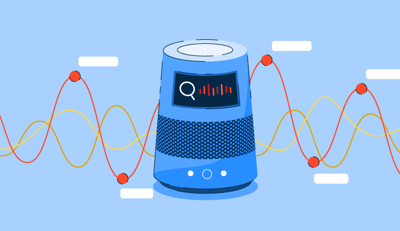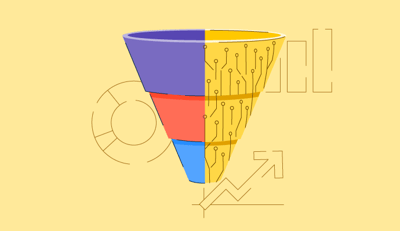December 12, 2024
 by Sagar Joshi / December 12, 2024
by Sagar Joshi / December 12, 2024

Chatbots work 24/7, tirelessly striving to solve your stakeholders’ problems.
They can book appointments, check account balances, and answer common questions. These software solutions make your business available to customers whenever they need support. AI chatbots have a hand in helping many organizations address customer queries thoughtfully and correctly.
Take a look at our exciting chatbot statistics that explore current and future market trends.
Chatbots add “fast” and “efficient” to your company’s description when put to good use. The statistics below relate to the state of chatbots in the current market and how they’re clearing the way for companies to better serve their clients.
of consumers say chatbot recommendations frequently or always influence their buying decisions.
Source: Tidio
The statistics below highlight chatbot usage among consumers and businesses.
of shoppers appreciated chatbots in 2023 for helping them with relevant product information before purchase.
Source: Statista
While chatbots bring several benefits to both consumers and businesses, they don’t get a green flag from everybody all the time. Let’s explore their case through a statistical lens.
of consumers prefer human interaction over chatbots when it comes to understanding their needs.
Source: Userlike
Chatbots work 24/7, well outside of regular business hours. They’re great for customers who need instant help because they can quickly answer common questions about products, services, or policies.
Customers no longer have to wait in long phone queues. They just type their question into a chat box to get an instant reply. If a chatbot can't solve a problem, the customer is connected to a human support agent.
Explore the statistics below to learn more about businesses turning to chatbots in their customer support functions.
of CX leaders believe chatbots are becoming essential in creating personalized customer journeys.
Source: Zendesk
Businesses have observed growth on many fronts after integrating chatbots into their workflows. The key benefits go hand-in-hand with generating high-quality leads, making a significant impact on the revenue.
AI chatbots are automated tools powered by artificial intelligence that can simulate conversations with users. They’re increasingly used by businesses to improve efficiency and enhance user experiences. This section explores important statistics that show how these tools are being adopted.
of customers find it harder to distinguish between AI and human service representatives.
Source: Zendesk
It’s evident from the stats above that teaming up with chatbots helps businesses manage customer interactions at scale. The bots take care of issues that can be resolved with a generic answer or support article, while human agents get back the time they need for critical support cases.
The mix of chatbots and human-powered customer support makes customer communication more efficient and effective, saving organizations ample time and money
Learn more about how to build a chatbot.
Sagar Joshi is a former content marketing specialist at G2 in India. He is an engineer with a keen interest in data analytics and cybersecurity. He writes about topics related to them. You can find him reading books, learning a new language, or playing pool in his free time.
As users move toward more advanced and diverse search methods, Google Search is evolving.
 by Sagar Joshi
by Sagar Joshi
Voice search has changed how we interact with our devices and access information. Nowadays, we...
 by Sagar Joshi
by Sagar Joshi
Artificial intelligence (AI) is changing how businesses interact with customers. It has made...
 by Sagar Joshi
by Sagar Joshi
As users move toward more advanced and diverse search methods, Google Search is evolving.
 by Sagar Joshi
by Sagar Joshi
Voice search has changed how we interact with our devices and access information. Nowadays, we...
 by Sagar Joshi
by Sagar Joshi


